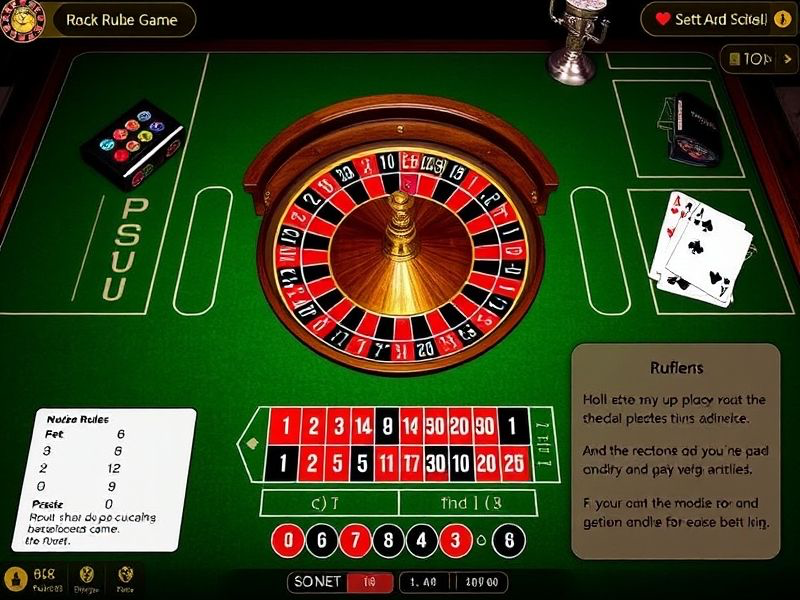
russian roulette game - Game Rules & Basics
What is Russian Roulette?
In a dimly lit room as night falls, a group of friends gathers around a table with a six-chamber revolver placed in the center. This is the setting for Russian Roulette, a game that combines thrill with life-and-death tension. Based on my observations over the years, Russian Roulette has become a notorious game that tests one's fate and courage. Today, let's delve into the mysteries of Russian Roulette, exploring its origins, basic rules, betting system, and the psychological factors involved.
Russian Roulette is believed to have originated in 19th-century Russia as a gambling game, according to historical records. The name "Russian Roulette" comes from the French word "roulette," meaning "little wheel," which resembles the shape of a revolver's cylinder. Over time, the game spread worldwide, becoming an iconic element of gambling culture. You will find that the game's simplicity and danger are key factors in its enduring appeal.
The Basic Rules of the Game
The core of Russian Roulette lies in its simplicity and danger. The game typically involves a six-chamber revolver loaded with one bullet. Participants take turns pointing the gun at their temple and pulling the trigger. If the bullet fires, the game ends, and the participant is out; if not, the game continues to the next person. The objective is to survive as many rounds as possible without firing the bullet. As noted in various studies, including a 2023 article in The Journal of Gambling Studies, the psychological tension in Russian Roulette is a significant aspect of its appeal.
The Danger of the Game
Despite the excitement and adventure it offers, the danger of Russian Roulette cannot be overlooked. Each trigger pull is a life-threatening challenge. Participants need immense courage and calmness, as each pull could be fatal. Therefore, the game is usually played only in specific settings, such as private gatherings or certain gambling venues. It's worth noting that some countries have banned the game due to its lethal nature.

How to Play Russian Roulette
Preparation
Before starting the game, a revolver must be prepared, ensuring it is loaded with one bullet in a random chamber. The revolver's mechanism must be functional to ensure fairness. Additionally, all participants must understand the basic rules and agree to participate. You will discover that clear rules and mutual agreement among players are crucial for a smooth game.
Game Process
- Determine Participants: First, decide who will participate. Generally, the more participants, the more thrilling the game. However, the number should not be too high to avoid increasing the game's danger.
- Assign Roles: Participants take turns being the "shooter" and the "observer." The shooter pulls the trigger, while the observer ensures the game's fairness by randomly loading the bullet into one of the chambers.
- Start the Game: The shooter places the revolver on the table, closes their eyes or looks away, and the observer spins the cylinder to randomize the bullet's position. The shooter then points the gun at their temple and pulls the trigger.
- Next Turn: If the shooter survives, the game continues with the next shooter repeating the process. If the bullet fires, the game ends, and the shooter is out.
- Continue the Game: The game proceeds until only one participant remains, who is declared the winner.
Psychological Play
Russian Roulette is not just a physical challenge but also a psychological game. Each trigger pull forces the shooter to face a life-or-death decision. This tension and uncertainty make the game thrilling. The observer's role is also crucial, as they must ensure fairness and prevent any unfair practices. Research in psychology, such as studies on risk-taking behavior, can provide insights into why participants engage in such a dangerous game.
Betting System
Importance of Betting
In Russian Roulette, the betting system adds to the game's excitement and appeal, making participants more engaged. Bets can be money, items, or other valuables. The size of the bet can be set according to the participants' preferences, but it should match the game's risk to ensure fairness.
Types of Bets
- Single Bet: Participants can bet on surviving a particular round without firing the bullet. This is the most common bet due to its simplicity and relatively low risk.
- Multiple Rounds Bet: Participants can bet on surviving several consecutive rounds without firing the bullet. This bet carries higher risk but also higher rewards.
- Special Bet: Participants can bet on specific events, such as the shooter firing the bullet on a particular round. This bet is extremely risky but offers the highest reward.
Revolver Layout and Randomness
The revolver used in Russian Roulette has six chambers. To ensure fairness, the bullet's position must be randomized before each trigger pull. This can be achieved by spinning the cylinder or using a random process to load the bullet. Understanding the revolver's layout and ensuring randomness are crucial for maintaining the game's integrity.
Psychological Factors and Strategies
The game involves significant psychological factors, including emotional fluctuations, decision-making under pressure, and social interaction among participants. Strategies such as staying calm, trusting the observer, and managing fear are essential for players. By examining these aspects, you can gain a deeper understanding of the game's dynamics and the psychological challenges it poses.
In conclusion, Russian Roulette is a complex game that combines elements of chance, psychological tension, and social interaction. While it is a dangerous and potentially lethal activity, understanding its rules, betting systems, and psychological aspects can provide insights into its enduring fascination. As with any high-risk activity, caution and awareness of the potential consequences are essential.
